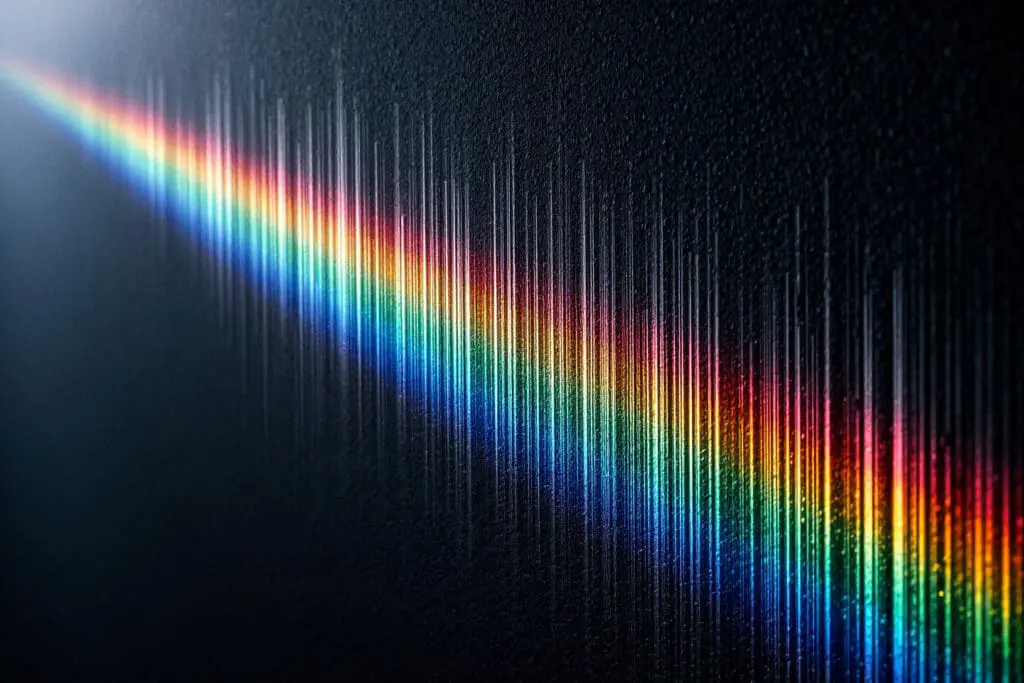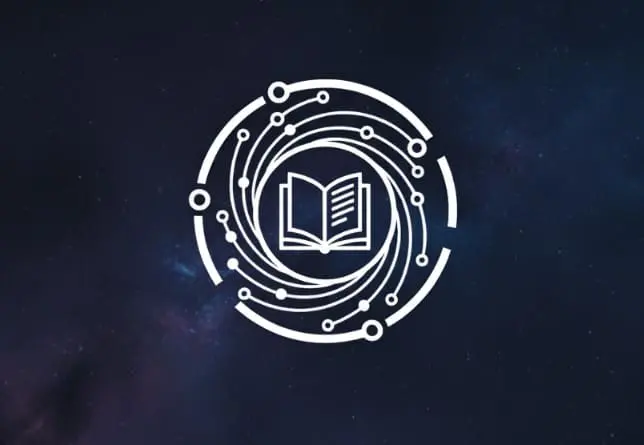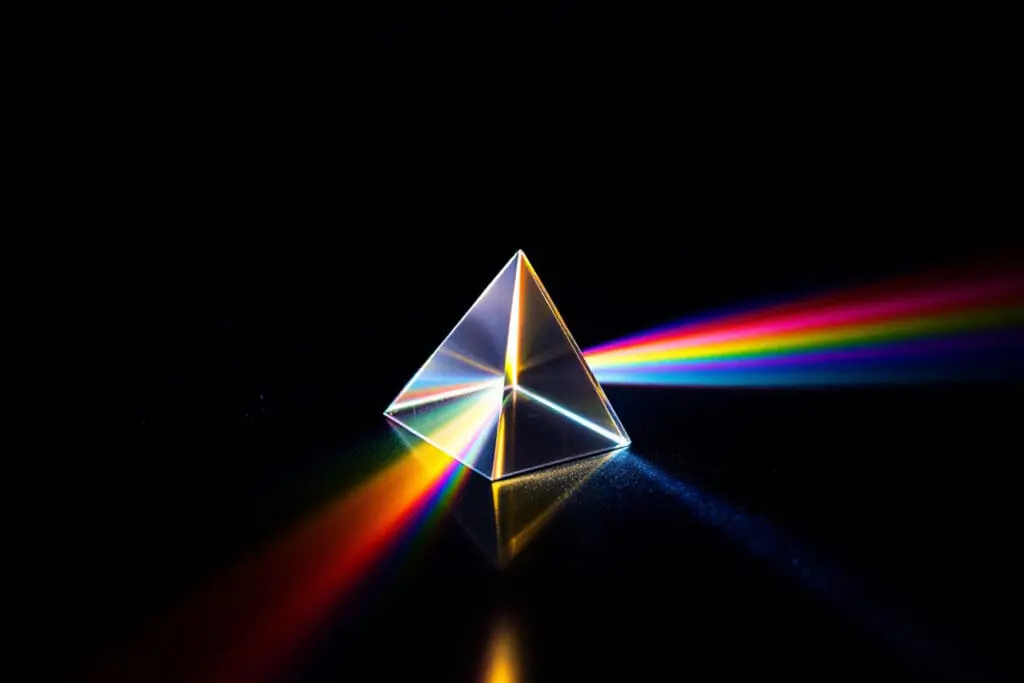Have you ever looked up at the night sky, a velvet blanket pricked with diamond-dust stars, and felt a profound sense of wonder? I have. Countless nights. It’s a universal human experience, that feeling of being so small yet connected to something immeasurably vast. For millennia, we could only look and wonder. We gave the stars names, spun stories about them, and charted their movements to guide our ships and plant our crops. But a fundamental question remained tantalizingly out of reach: What are they? We couldn’t visit one, touch one, or take a sample. All we had was their faint, ancient light.
It turns out, that’s all we needed.
That tiny pinprick of light, traveling across unfathomable distances, is a message in a bottle. It’s a cosmic postcard carrying an astonishing amount of information. Astronomers have become expert decoders of this light through a technique called spectroscopy. By simply breaking starlight down into its component colors—a rainbow, essentially—we can read a star’s story. In this deep dive, we’re going to explore what a light spectrum tells us, from a star’s chemical makeup and temperature to its speed and even whether it hosts distant worlds. The light itself is the key.
More in Cosmic Physics Category
The True Nature of Light in Space
How Spectrometry Analyzes Stars
The Doppler Effect with Light in Space
Key Takeaways
- Cosmic Fingerprints: A star’s light spectrum reveals its precise chemical composition. The dark lines in its spectrum act as a unique barcode for the elements present in its atmosphere.
- Stellar Thermometer: The color and peak brightness within the spectrum tell us a star’s surface temperature. Hotter stars are blue, while cooler stars are red.
- Cosmic Speedometer: Shifts in the spectral lines (the Doppler effect) show whether a star is moving toward us (blueshift) or away from us (redshift), and how fast.
- Hidden Details: The width and shape of these spectral lines can reveal even more, including a star’s rotation speed, its size (giant or dwarf), and the strength of its magnetic field.
- Universal Secrets: Spectroscopy is a cornerstone of modern astronomy, enabling us to discover exoplanets, measure the age of the universe, and confirm its ongoing expansion.
Have You Ever Wondered How We Know What Stars Are Made Of?
It sounds impossible, doesn’t it? A star is a ball of plasma burning millions of miles away. How could we possibly know that our Sun is mostly hydrogen and helium, with just a sprinkle of other elements? The answer begins with the light itself. It’s not just a single, uniform beam of brightness.
It’s so much more.
Isn’t Starlight Just… Light?
On a basic level, yes. But that’s like saying a book is just paper and ink. The magic is in the arrangement. Think back to a science class when you saw a prism. White light goes in one side. The prism bends the light, spreading it out into a beautiful rainbow on the other. This is a continuous spectrum. It contains all the colors, smoothly transitioning from red to violet with zero gaps.
At its source, deep inside a star, light starts as this perfect, continuous spectrum. It’s a torrent of every single wavelength. But this light doesn’t beam straight to our telescopes. It has a journey to make first. Before escaping the star, it must pass through the star’s own atmosphere—a cooler layer of gas. That’s where the real story gets encoded.
So, How Does This Rainbow Become a Cosmic Fingerprint?
Here’s where it gets brilliant. The atoms in that cooler stellar atmosphere are hungry, but they are incredibly picky eaters. An atom of hydrogen, for example, will only absorb light at very specific wavelengths—specific shades of red, blue-green, and violet. Helium? It absorbs a completely different set of colors. Every element has its own unique spectral “appetite.”
As the perfect rainbow from the star’s core shines through this gassy atmosphere, the atoms of hydrogen, helium, iron, and so on each pluck out their favorite wavelengths. When we capture that starlight here on Earth and run it through a spectroscope, we don’t see an unbroken rainbow. Instead, we see a rainbow with a series of thin, dark lines cutting through it.
This is called an absorption spectrum.
Those dark lines are the missing colors. They are the exact wavelengths that the elements in the star’s atmosphere ate for lunch. Since each element creates a unique pattern of dark lines, that pattern becomes a definitive fingerprint. It’s a cosmic barcode. By matching the pattern of lines we see to the known patterns for each element, we can say with absolute certainty what a star is made of. It’s a staggering feat, all thanks to a few missing shades in a rainbow.
Can a Star’s Glow Really Tell Us Its Temperature?
Look at a campfire. You can see this principle right there in the flames. The coolest embers glow a dull red. The hotter parts of the flame burn a bright yellow-orange. The very hottest part at the base might even flicker with blue. Stars are no different, just on a much, much grander scale. Their color is a direct clue to their surface temperature.
Why Are Some Stars Blue and Others Red?
The physics behind this is surprisingly simple. Anything with a temperature above absolute zero gives off light. The specific colors it gives off depend entirely on how hot it is. Cooler objects emit longer-wavelength light, like the infrared we feel as heat and, eventually, red light. As an object gets hotter, it starts blasting out shorter-wavelength light, moving through orange, yellow, and white, all the way to brilliant blue.
This means a relatively cool star like Betelgeuse glows a distinct reddish-orange, with a surface temperature of a “mere” 6,000 degrees Fahrenheit. Our own Sun, a solid medium, appears yellow-white at about 10,000°F. Then you have the true celestial blowtorches. A star like Rigel blazes at a scorching 21,000°F, giving it an intense blue-white glare.
Just by looking at a star’s color, we get a good idea of how hot it is. But the spectrum lets us be far more precise.
What Does a Star’s “Perfect Rainbow” Look Like?
For pinpoint accuracy, scientists compare a star’s light to a theoretical ideal called a “black body,” a perfect emitter of radiation. Stars are a near-perfect match. The light from a black body at a given temperature has a specific curve, peaking at one particular wavelength.
When we plot a star’s spectrum on a graph—measuring the brightness of each color—we get a similar curve. This curve isn’t flat. It has a peak. This peak represents the color the star is emitting most brightly. By finding that peak wavelength, we can plug it into a simple formula (Wien’s Displacement Law) and calculate the star’s surface temperature with incredible accuracy. A hot blue star’s curve peaks in the blue. A cool red star’s curve peaks in the red. It’s a celestial thermometer that works from light-years away.
Is It Possible to Clock a Star’s Speed from Millions of Light-Years Away?
Knowing a star’s composition and temperature is revolutionary. But spectroscopy has another mind-bending trick. It can tell us how a star is moving through space. It’s a cosmic radar gun of unbelievable range, measuring a star’s speed and direction relative to us. The key is a phenomenon you experience every day.
Have You Heard of the Doppler Effect for Light?
Imagine standing by the side of a road as an ambulance approaches, its siren blaring. As it rushes toward you, the pitch of the siren sounds high. The instant it passes and starts moving away, the pitch suddenly drops. The siren didn’t actually change. Your perception of its sound did. That’s the Doppler effect. As the source of a wave moves toward you, the waves get compressed, making the frequency higher. As it moves away, the waves get stretched out, making the frequency lower.
The exact same thing happens with light waves.
If a star is moving toward us, the light waves it emits get squished together. This compression shifts the light toward the shorter-wavelength, blue end of the spectrum. We call this blueshift. If a star is moving away from us, its light waves get stretched out. This shifts them toward the longer-wavelength, red end of the spectrum. This is called redshift.
How Does This Red and Blue Shift Translate to Real Numbers?
Remember those dark spectral lines? The elemental fingerprints? Those are our speed markers. We know exactly where the lines for hydrogen should be in a spectrum. If we look at a star and see all those lines shifted slightly toward the blue end of the rainbow, we know that star is moving toward us. If they are all shifted toward the red end, it’s moving away. Simple as that.
Even better, the amount of the shift tells us the speed. A tiny shift means a slow crawl. A large shift means the star is really booking it. This tool completely changed our understanding of everything. In the 1920s, astronomer Edwin Hubble used it on distant galaxies. He found that nearly every galaxy was redshifted—they were all moving away from us. And the farther away a galaxy was, the bigger its redshift. This was the first concrete proof that the universe is expanding, a discovery made possible by tiny shifts in ancient light. You can learn more about this incredible work directly from NASA’s overview of Hubble’s Law.
What Else Is Hidden Within Those Tiny Lines of Light?
You’d think we would have extracted every secret by now. Composition, temperature, motion. But astronomers are relentless. By examining the shape of the spectral lines themselves—their thickness and structure—they can uncover even more subtle details. The lines themselves hold stories.
Can We Tell if a Star is Spinning?
Amazingly, yes. Think about a spinning star. As it rotates, one edge is moving toward us while the other is moving away. The light from the approaching edge gets slightly blueshifted. The light from the receding edge gets slightly redshifted. Our telescopes can’t see these separate edges; they just see all the light blended together.
The result? A spectral line that would be sharp and narrow for a motionless star gets smeared out. The combination of blueshifted, redshifted, and unshifted light broadens the line. The faster the star spins, the wider the line becomes. By measuring that width, we can calculate how fast the star is rotating. It’s an elegant solution to a seemingly impossible problem.
What About a Star’s Size and Density?
The spectrum can also help us tell apart stars that have the same temperature but are wildly different sizes. A massive red supergiant, for instance, can be just as hot as a tiny red dwarf. So how do we tell them apart? Again, the lines hold the clue, this time through something called pressure broadening.
In a small, dense star like a red dwarf, the atmosphere is under intense pressure. The atoms are constantly bumping into each other. These collisions disrupt their ability to absorb light cleanly, causing the spectral lines to become fuzzy and broad. In contrast, a giant star has a vast, puffy, low-pressure atmosphere. The atoms are spread out and rarely collide. They produce exceptionally sharp, narrow spectral lines. Broad, fuzzy lines mean a dense dwarf. Crisp, narrow lines mean a puffy giant.
Can a Spectrum Even Reveal a Star’s Magnetic Field?
This is one of the most subtle, yet powerful, applications of spectroscopy. A strong magnetic field can actually split a single spectral line into two, three, or more very closely spaced lines. This is called the Zeeman effect. Observing this splitting is incredibly difficult, but when astronomers spot it, it’s a smoking gun for a magnetic field. The amount of separation between the split lines tells them exactly how strong the field is. This allows us to map the powerful magnetic fields that drive sunspots and solar flares on stars millions of light-years away.
How Does This Help Us Find New Worlds and Understand the Universe?
Spectroscopy isn’t just for cataloging individual stars. It’s a tool we apply to the biggest questions out there, from finding new planets to understanding the birth of the cosmos.
Are We Using Starlight to Hunt for Exoplanets?
Yes, and it’s one of our best methods. The technique is called the radial velocity or “wobble” method. When a planet orbits a star, its gravity pulls on the star, causing the star to make its own tiny orbit, or “wobble.” From our perspective, this means the star is periodically moving slightly toward us, then slightly away from us. This wobble is far too small to see, but we can detect it in the star’s spectrum. We see its spectral lines rhythmically shifting back and forth—a tiny blueshift, then a tiny redshift, over and over.
By watching for this periodic shifting, we can know an unseen planet is there. From the wobble, we can learn a lot:
- Its Year: The time it takes for the pattern to repeat tells us the planet’s orbital period.
- Its Mass: The size of the shift tells us the speed of the star’s wobble. A bigger wobble means a more massive planet is doing the pulling.
This ingenious method has discovered hundreds of planets, all without ever seeing them. We find them by watching their parent star dance.
What Does the Light from the Oldest Galaxies Tell Us?
On the grandest scale, spectroscopy is our time machine. When we look at the most distant galaxies, we are seeing light that has been traveling for billions of years. During that epic journey, the universe itself has been expanding. This expansion of space has stretched the light waves, shifting them dramatically to the red.
This is cosmological redshift. The amount of redshift is a direct measure of a galaxy’s distance, telling us how far back in time we are looking. The James Webb Space Telescope uses this very technique to study light from the first galaxies that formed over 13 billion years ago. This ancient light even tells us about the journey it took. As light from a distant object travels toward us, it passes through invisible clouds of intergalactic gas, which leave their own absorption lines on the spectrum. By studying these lines, we can map the unseen matter across the universe.
From a single star to the entire cosmos, the story is written in the light. All we have to do is learn how to read it. And every time we build a better instrument, we learn a little more of the cosmic language, decoding the secrets of the sky one spectrum at a time.
It all starts by looking up.
FAQ – What a Light Spectrum Tells Us

What additional insights can we gain from spectral lines aside from composition and movement?
Spectral lines can also indicate a star’s rotation speed, size, density, and magnetic field strength. Broader lines suggest rapid rotation or high pressure, while the Zeeman effect—splitting of lines—reveals magnetic field strength.
How does spectroscopy assist in the search for exoplanets and understand the universe?
Spectroscopy detects exoplanets through the radial velocity method, observing tiny shifts in a star’s spectrum caused by orbiting planets. It also helps study distant galaxies, measure the universe’s expansion via redshift, and analyze the composition and conditions of celestial objects across the cosmos.
How is the Doppler effect used to measure the movement of stars?
The Doppler effect causes shifts in the spectral lines of a star’s light; when a star moves toward us, the lines shift toward shorter wavelengths (blueshift), and when it moves away, they shift toward longer wavelengths (redshift). The amount of shift reveals the star’s speed and direction of movement.
In what way can spectroscopy determine a star’s temperature?
Spectroscopy determines a star’s temperature by analyzing the peak wavelength of its spectrum, which closely matches that of an ideal black body. The color and the position of this peak allow scientists to calculate the star’s surface temperature with high precision.
How does a star’s light spectrum reveal its chemical composition?
A star’s light spectrum displays dark lines known as absorption lines, which are unique to each element. These lines occur at specific wavelengths when atoms in the star’s atmosphere absorb particular colors of light, creating a cosmic barcode that identifies the elements present.

